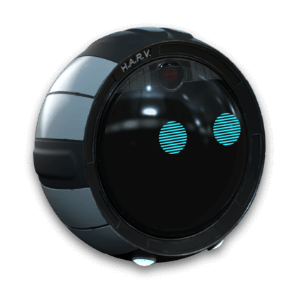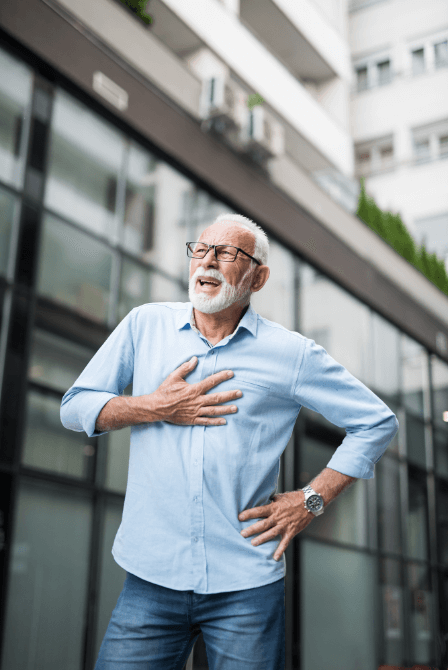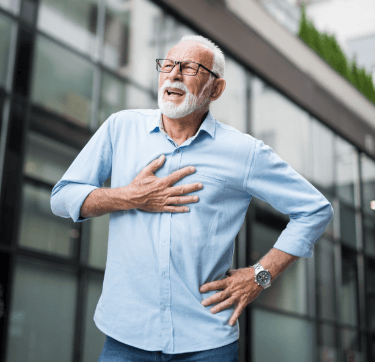
What is a Stroke?
A stroke occurs when a blood vessel, which is carrying oxygen and nutrients to the brain, bursts or is blocked by a clot.1
This causes an interruption of the blood supply to a part of the brain. This can damage or destroy brain cells which will affect body functions.1
A stroke is a medical emergency. Therefore, recognising the symptoms and accessing treatment immediately can be crucial.2
Act F.A.S.T. when stroke strikes3
A simple test can help you recognise if someone has had a stroke:3
Can the person smile? Has their mouth or eye drooped?
Can the person raise both arms?
Can the person speak clearly and understand what you say?
Call 999 for an ambulance if you spot any one of these signs.
Every minute matters so act F.A.S.T. Calling an ambulance and getting straight to the Emergency Department can make all the difference. Emergency treatments for stroke patients can save lives and greatly reduce the disability a person may have after their stroke.3

Stroke symptoms include:4,5
The right half of the brain controls the left side of the body and vice versa. For example, paralysis in the left arm may result from a stroke in the right side of the brain.6
For most people, the left side of the brain controls language.7,8 The right side controls perceptual skills and spatial skills.8

There are two main types of stroke.9
Over 80% of strokes are caused by a blockage of an artery supplying blood to the brain. This is known as an ischaemic stroke.9,10 It is caused by:
A blood clot that forms in a main blood vessel (artery) to the brain. This is called a cerebral thrombosis. Clots form in arteries that already have been narrowed by a condition called atherosclerosis (hardening of the arteries).10,11
Atherosclerosis causes fatty material to build up along the inner lining of the arteries so that they become narrow and the blood flowing through them becomes more likely to clot.10,11
Lifestyle risk factors for atherosclerosis include abnormal cholesterol, smoking, high blood pressure, diabetes, obesity and physical inactivity.11
A partial clot that may form elsewhere in the body which is carried in the bloodstream to the brain and gets lodged in an artery. This is embolic stroke.12
Blockages that occur in the tiny blood vessels deep in the brain. This is a lacunar stroke.13
Up to 20% of strokes are caused by a bleed into the brain from a burst blood vessel.4 This is called haemorrhagic stroke and is associated with severe morbidity and high mortality.15